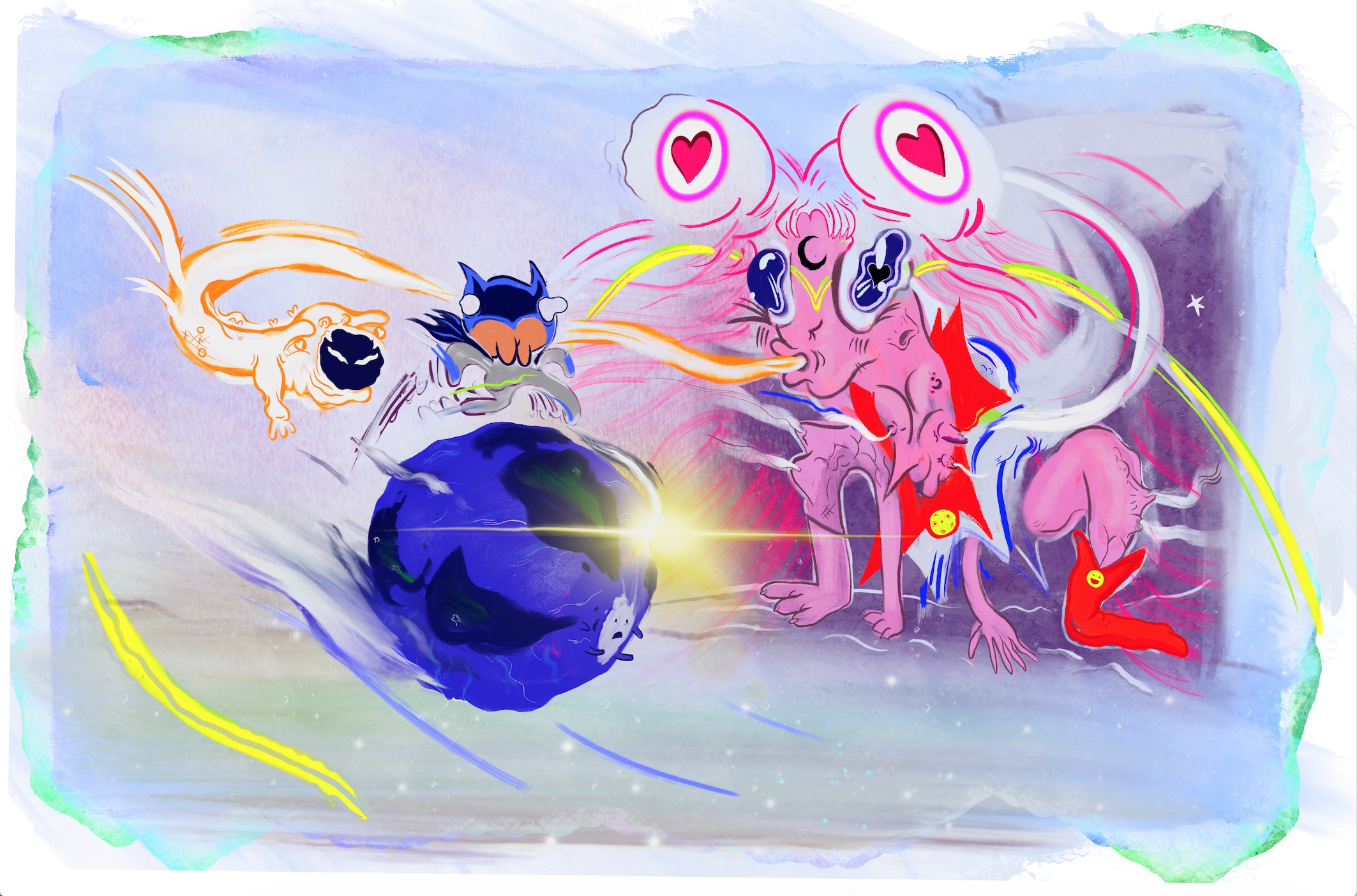
Essay
Four Hundred and Fifty Two Tits
by Fernanda Ballesteros
The underground loop from Mount Fuji to Popocatépetl, the ring of fire
Reading time
4 min
Israel Urmeer and Fernanda Ballesteros published Arigatou goza-y-más (Elefanta/ISC, 2019), a book of the kawaii, the loneliness, the congestion, the pop, the futuristic, and the eternal of Tokyo and Hakone.
They now extend this collaboration using the underground loop from Mount Fuji to Popocatépetl, the chain of volcanoes forming the perimeter of the Pacific Plate, the ring of fire.
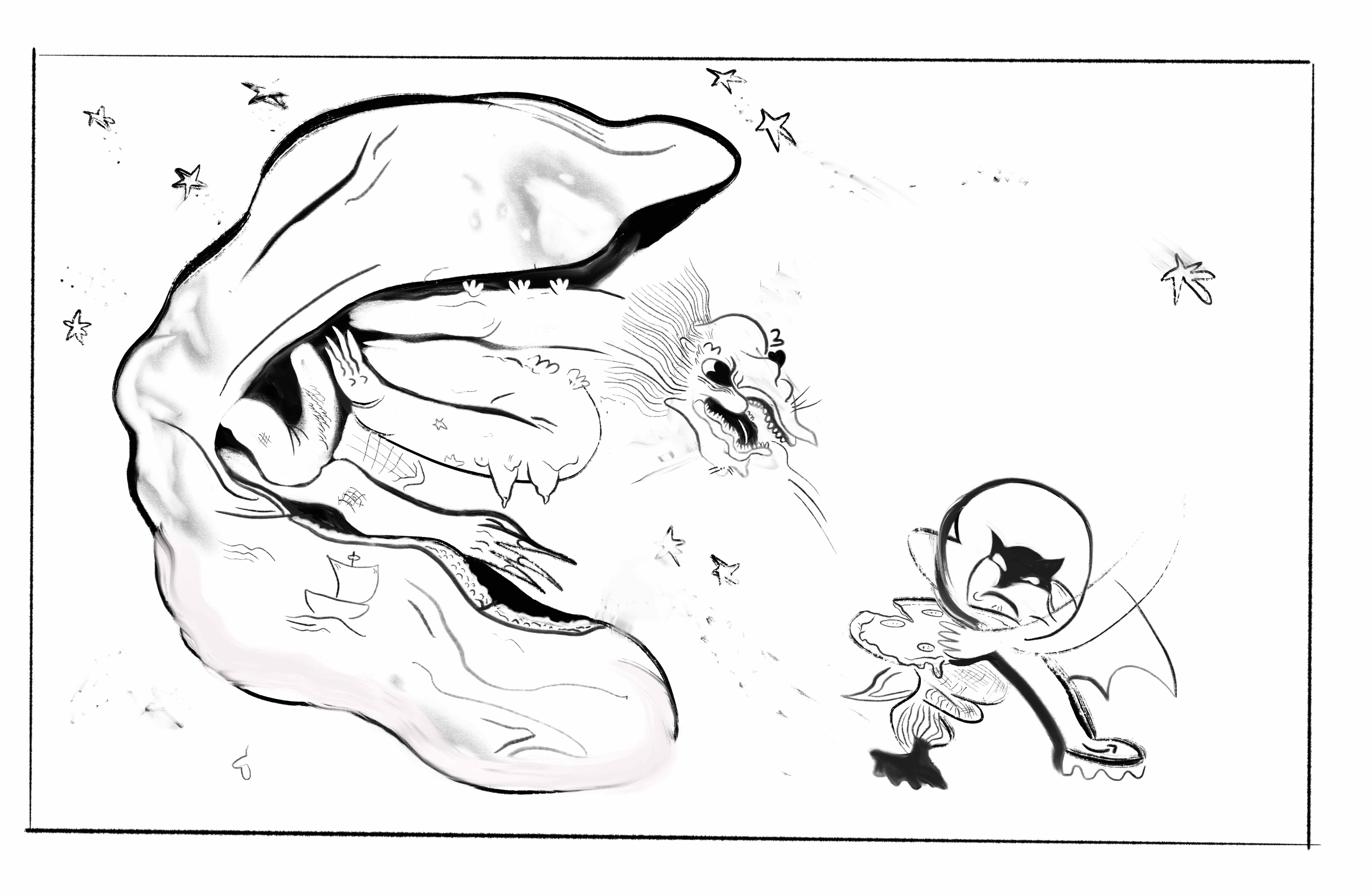
The center of the Earth is at 6000 kilometers and 6000 degrees celsius.
The deepest that humans (being ephemeral and tiny) have reached is a drilling well in Russia, at 12.2 kilometers. It’s called the Kola Superdeep Borehole. It reminds me of the cola I encountered in Cuba, when I went there and the Gringos hadn’t yet returned: tuKola.
It took 20 years to dig tuKola’s superdeep well and the locals swear that they can hear the tortured of Hell rising up in echoes. That’s also what they call the hole: the Well to Hell.
Only 5987.7 kilometers remain to be drilled. 99.7% of the magic hole.
Scientists capture information from the center of the Earth, from the devil’s garden with its iron and nickel palm trees, thanks to each one of the Earth’s wahahahas, those convulsions we call earth-q-quakes.

In Mexico there are 40 per day.
Beneath this country’s soils there are 5 tectonic plates: 4 of the 14 main ones in the world. Too many for just one flag.
But the rocks under the sea have their own borders and nations.
One’s called Rivera and the other Cocos. Tiny, spicy—they’re to blame for the quake of ’32, of ’85, of 2017. We also have the North American plate that extends all the way to Greenland, Cuba, and the Bahamas. And we have the Caribbean one that moves toward the southeast along with all of Central America.
And we have the Pacific one. The biggest and most active of all. The empire of plates, the demonic force, the dragon we call the Ring or Rim of Fire, the Quetzalcóatl of 40 thousand kilometers that moves under the ocean—of supposed peace—among 452 volcanoes: the subduction that causes more earthquakes than any other on the planet.
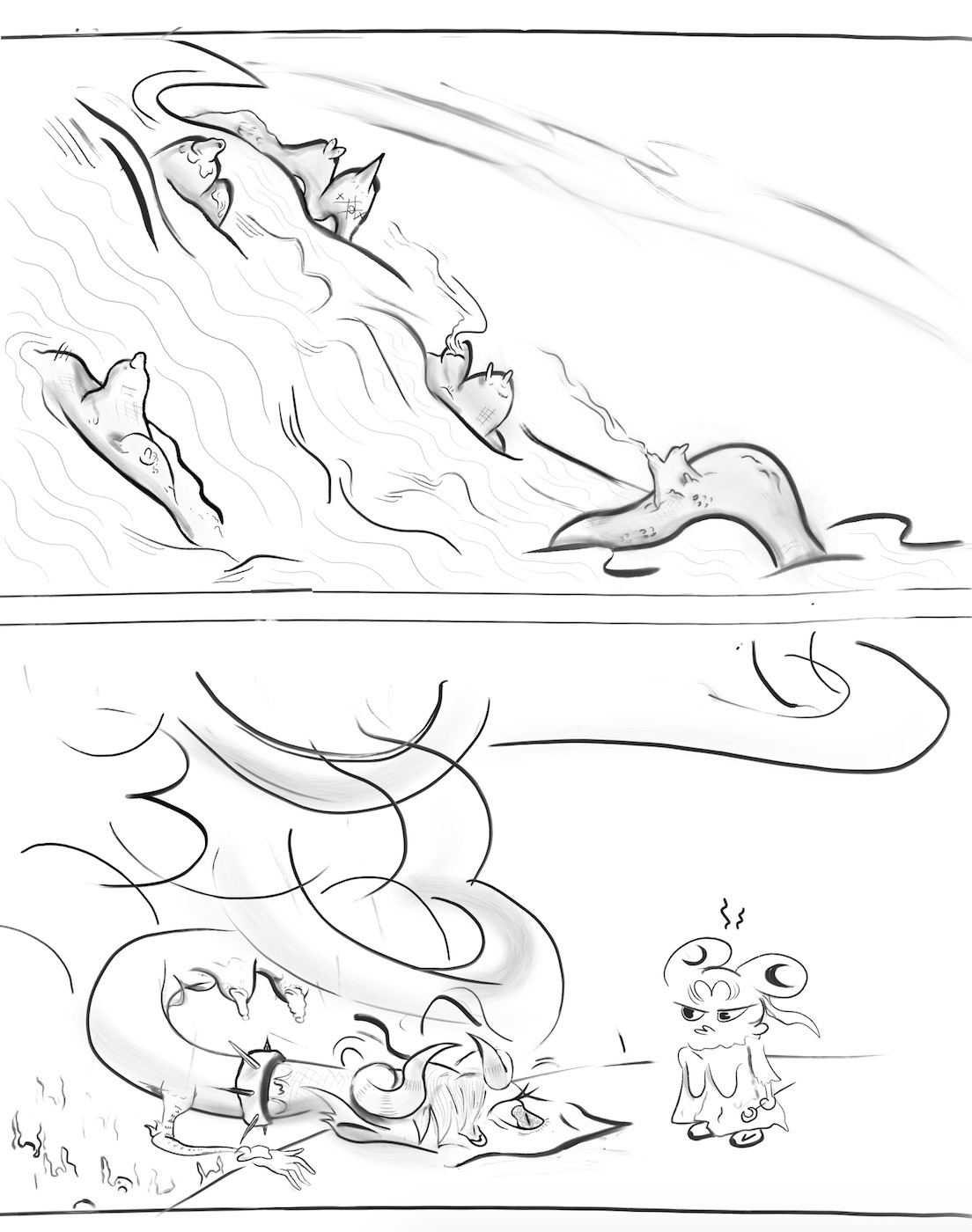
Mayahuel is the lunar goddess of the maguey, Quetzalcóatl’s lover, who with 400 leave-tits feeds her 400 rabbit-children with pulque milk. And there’s yet another lunar goddess, lover of another feathered serpent, living underground. She, with her 452 volcano-tits, emanates evaporated milk, coal, lava, and drool from her lover. She sleeps in her ocean bed, the algae as pillows, the wa-aves as her sheetssss.
I don’t know what name to give this goddess. Volcahuel. The Superdeep Goddess of Magma.
The ones that are already baptized are her tits: Licancabur, Popocatépetl, Tungurahua, Ollagüe, Avachinsky, Mayon, Tambora: names in Kunza, in Nahuatl, in Quechua, in Aymara, in Russian, in one of the 170 languages of the Philippines, in the now-extinct Tambora.
Paricutín (named in the Purépecha language), the youngest volcano in the world, sprouted from a plain in a field where there are more than 1200 volcanes. It has a birth certificate registered by Dr. Atl on February 20, 1943. Because the painter sketched out everything, beginning with its appearance. And it grew 150 meters in 6 days, and then 424 meters, and then the explosion, and thus it ate up two villages with its ashes and hot slow tongues. At San Juan Parangaricutiro it engulfed half the church.
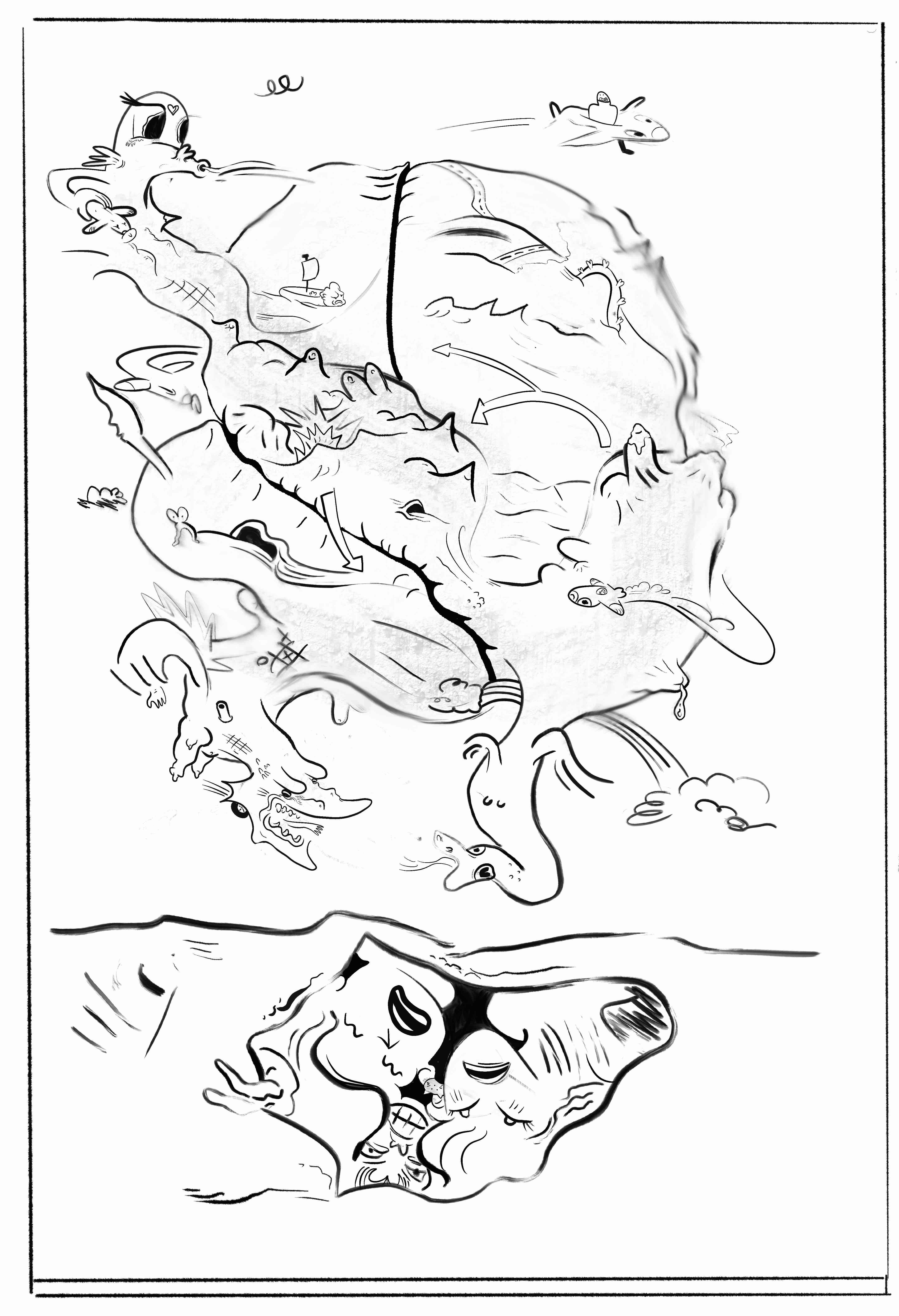
Whenever the Superdeep Goddess of Magma wakes up during the day, the lava, her lover’s drool, looks liked melted and burnt cheese, the cheese of a cheap pizza. But not at night, since that’s when it shines: red, orange, dense, pasty, calm when going down, fast when leaving in kilometer-long gushes.
Cheesy inspiration for many poets. I wanted to quote one. The one that seemed less yoked to the refinement of pink phoniness was one by Neruda, who talks of heads like volcanoes painted by Diego Rivera. They say that the Rivera plate is named after Diego.
I’m talking a lot about Mexico, and I want to gush about the Superdeep Goddess of Magma when she’s in Japan. There’s a rumor that Mount Fuji, Japan’s highest peak, is also registered as a citizen. A divine civilized tit. And yet another piece of information says that its name comes from 不死 fushi, meaning immortality.
For humans (being ephemeral and tiny), volcanoes are forever. In fact, they’re entities with pores and voluptuousnesses that stick out in slow, slow, slow orgies of interlaced rocks from the gardens of devils and goddesses under the ocean.
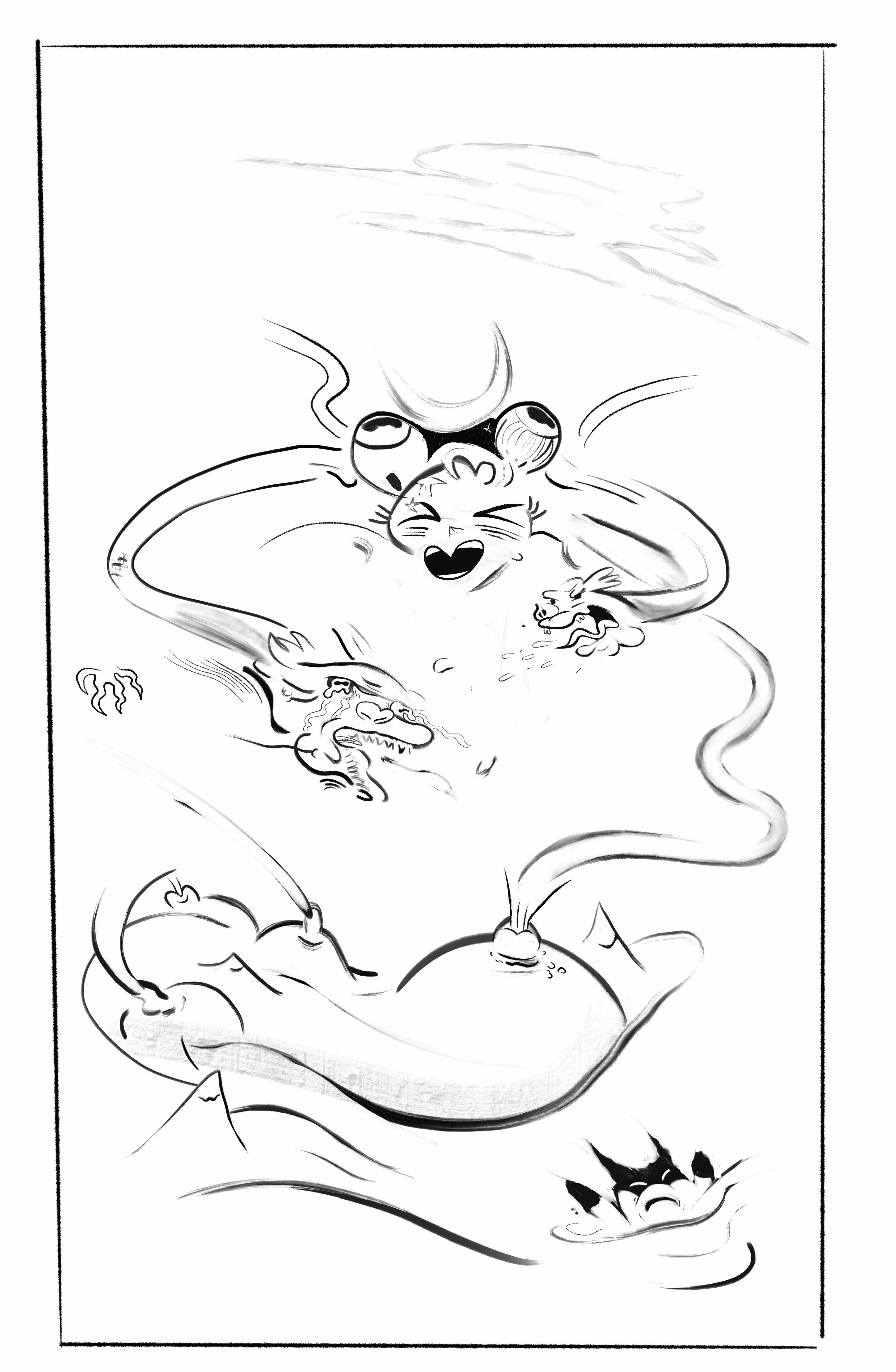
Published on November 19 2020